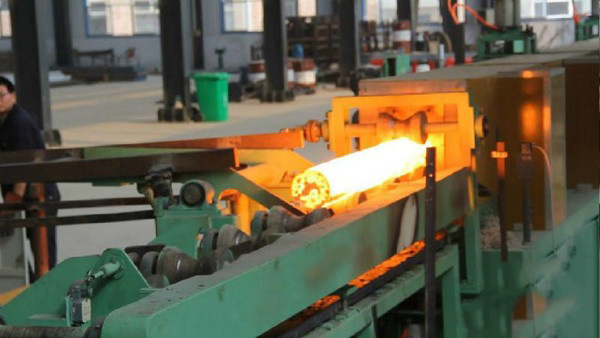The universal rolling mill is composed of a pair of horizontal rolls and a pair of vertical rolls. The axis of the four rolls is in a plane. The horizontal rolls are the driving rolls and the vertical rolls are the driven rolls (some rolling mill vertical rolls can also be driven). It can process the rolled pieces on four sides, and the two-high horizontal rolling mill is used as the auxiliary stand (edge rolling machine).
Universal rolling mills are mainly used to roll various types of steel, such as H-beam, rail, I-beam, channel steel, steel sheet pile, U-beam, L-beam, unequal angle steel and other types of steel, because it is suitable for many Variety of steel rolling, hence the name "universal rolling mill".
Features of Universal Rolling Mill
1. The complex section shape composed of four rollers can compress all components of the section at the same time, the deformation of the rolled piece is uniform, the speed difference around the section is small, and the internal stress of the rolled piece is small.
2. Rolls with a smaller diameter can be used (because there is no need to slot on the rolls) to roll products with higher legs and wider waists, and the inner sides of the legs can be made without slope. This is difficult to achieve on an ordinary two-high rolling mill.
3. The reduction of the leg and waist of the rolling piece can be adjusted separately, which simplifies the adjustment of the rolling mill during rolling.
4. The rolling precision is high, the roll wear is less, and the energy consumption is reduced.
According to the structure of the universal rolling mill, there are four main types: closed-end, UD (Universal-Duo) prestressed/short-stressed, SC (Schloemann-Siemag compact stand) connecting plate three-type and compact rolling mill.
The Development History of Universal Rolling Mill
1. The world's first universal rolling mill was built in the Arbed factory in Luxembourg in 1902, but the I-beam with a wider flange was rolled at that time, and the inner side still had a slope.
2. In 1914, the German Payin Company adopted the Green rolling method (a side rolling mill and a universal rolling mill are used together) to build the Payin H-shaped steel plant; the rolling of the rails adopts the traditional two-roll pass method.
3. In 1973, the French Vendell-Sidelor Company developed a new process for rolling steel rails on a four-high rolling mill and obtained a patent. Japan, Brazil, and the United States have followed suit and introduced them.
4. In 1998, Maanshan Iron & Steel rolled out China's first H-beam with a universal rolling mill imported from abroad.
5. Localized import and export: Since then, Laiwu Steel, Rizhao, Jinxi and other steel mills have successively introduced foreign universal rolling mills. By 2007, the number of universal rolling mills in China has shown a rapid increase, and most of the equipment has been imported at high prices from abroad. Among them, in 2003, the 300H section steel production line designed and manufactured by Tianjin Zhongzhong Science and Technology Engineering Co., Ltd. was put into operation, marking the official launch of China's self-developed universal rolling mill. Since then, the universal rolling mills of Dalian Zhengda, Tangshan Shengda, Anshan Zizhu (Anshan No. 3 Rolling), and Anshan Baode, designed and manufactured by Tianjin Zhongzhong, have been put into operation one after another.
If you are interested in our rolling mill machine, please mail at marketing2@hanrm.com.
More Articles You May Be Interested in:
Bar Rolling Process and Equipment Selection
The Advantages and Disadvantages of Hot Rolling
Hot Rolled Steel and Cold Rolled Steel
Hot Rolling Process VS Cold Rolling Process
What’s the difference between hot and cold rolling mills?
Features of Hot Rolling and Controlled Cooling
What is Metallurgical Equipment?
The Main Factors Affecting the Quality of the Wire Rod
Technical Progress of High-speed Wire Rod Mills
Bar And Wire Rod Direct Rolling Technology without Heating
Common Phenomena and Processing Methods in Wire Rod Production
How to Improve the Assembly Quality of the Roller Box of the Wire Rod Mill?
Process Adjustment of Wire Rod Mill
Development of High Speed Wire Rod Mill
Processing Technology of Parts in High-speed Wire Rod Mill
Wire Rod Mill Structure and Arrangement
The Production Process of Wire Rod
Technical Characteristics of Bar and Wire Rod Mill





